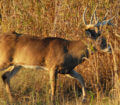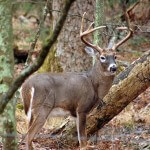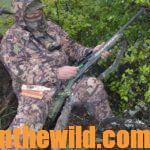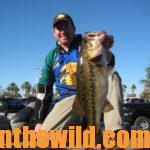Editor’s Note: Regardless of how-many decoys you put-out to lure-in ducks, if you place those decoys in ponds and potholes that ducks never frequent, they won’t lure-in any ducks. The same is true of deer attractants. Yes, their fragrances eventually may lure-in deer. However, if you put a deer attractant along the edges of trails that deer use every day, they don’t have to find the attractant. They’ll pass by it regularly. You’ll see more deer at your deer attractant sites next to trails than if you just put the attractant out in the middle of the woods where there’s no deer sign at all. To see the most deer and possibly the biggest deer quickly, put deer-attractant products where you know deer are traveling on trails. Several-different types of paths or trails are used by deer. Some are obvious, but many are inconspicuous. If you know what to look for and where to look, you can take a stand along these trails, place deer-attractant products nearby and drastically increase your ability to find and bag deer. Let’s determine how to locate various kinds of trails, how to hunt them and how you can use deer attractants to improve your chances for taking deer on those trails.
 Sometimes deer take routes through the woods without leaving trails. Even when deer frequent a particular area, they may not walk down a certain path as they move through this region, but instead will meander through the woods. Often meandering trails are present where two types of habitat pinch-down a woodlot and create a funnel. Most of the time deer will meander through that funnel, rather than taking a specific route. For instance, if a field or a clear cut corners near the bend of a creek, there only may be 30 to 50 yards of woods between the creek and the field where the deer prefer to walk, although there may be a large expanse of woods on either side of this small neck of woods. If the leaves are falling or are already on the ground in this region, little if any deer sign may be on the ground for you to see. Even though this route is a deer highway, it may not be easily distinguishable.
Sometimes deer take routes through the woods without leaving trails. Even when deer frequent a particular area, they may not walk down a certain path as they move through this region, but instead will meander through the woods. Often meandering trails are present where two types of habitat pinch-down a woodlot and create a funnel. Most of the time deer will meander through that funnel, rather than taking a specific route. For instance, if a field or a clear cut corners near the bend of a creek, there only may be 30 to 50 yards of woods between the creek and the field where the deer prefer to walk, although there may be a large expanse of woods on either side of this small neck of woods. If the leaves are falling or are already on the ground in this region, little if any deer sign may be on the ground for you to see. Even though this route is a deer highway, it may not be easily distinguishable.
According to my friend Sam Spencer, a longtime bowhunter, “Hunting a funnel that narrows-down to one specific area improves the odds of the deer coming by you, instead of their walking past you out of range of your bow. For example, where a dead tree is down in a funnel area that deer must walk around is a good place to set-up your stand. Any break in the funnel where deer must pause for a short time to go under a fence or to cross a stream also will be productive spots for taking deer, because the deer are stopping and thinking about how to traverse the obstacle, rather than considering the danger that may be present. Too, they’re not spending as much time looking up in the trees, if they’re negotiating an obstacle in the funnel.”
In a funnel with no well-defined trail, the deer can show-up anywhere. Therefore, putting-out a deer attractant where you want the deer to stop and hold (preferably in front of your stand), drastically can increase your odds for getting a close shot. Another advantage to using a deer attractant is that any deer that comes through that funnel will be able to smell the deer attractant and respond to it. Therefore, if a funnel is 50-yards wide, and you want your deer at 30 yards or less, put-out a deer attractant where you want the deer to stop.
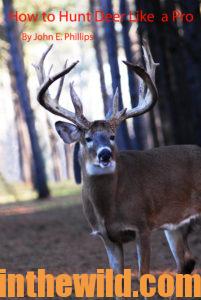
 To learn more about deer hunting, go to John E. Phillips’ books and learn the tactics small property owners have used successfully by checking out John E. Phillips’s book, “How to Hunt and Take Big Buck Deer on Small Properties” at https://www.amazon.com/dp/B00OOC2T0Y#, available in Kindle, print and Audible versions. To receive your free book on “How to Make Venison Jerky,” go to https://www.emailmeform.com/builder/form/Ece3UZVcOo52cKPJcL
To learn more about deer hunting, go to John E. Phillips’ books and learn the tactics small property owners have used successfully by checking out John E. Phillips’s book, “How to Hunt and Take Big Buck Deer on Small Properties” at https://www.amazon.com/dp/B00OOC2T0Y#, available in Kindle, print and Audible versions. To receive your free book on “How to Make Venison Jerky,” go to https://www.emailmeform.com/builder/form/Ece3UZVcOo52cKPJcL

